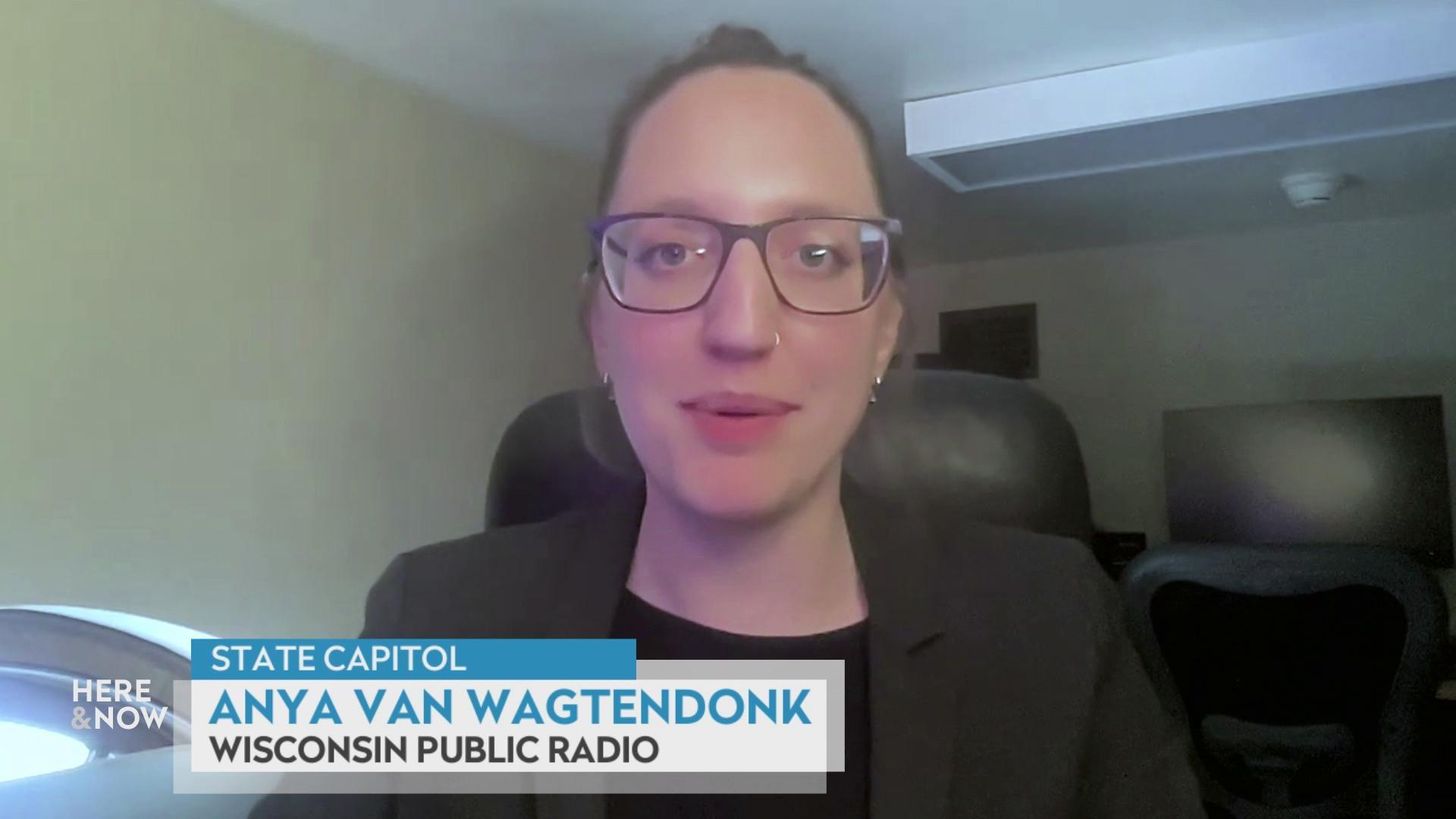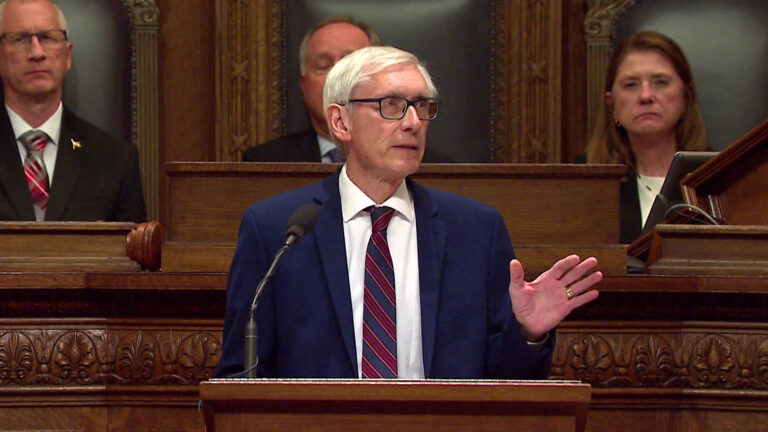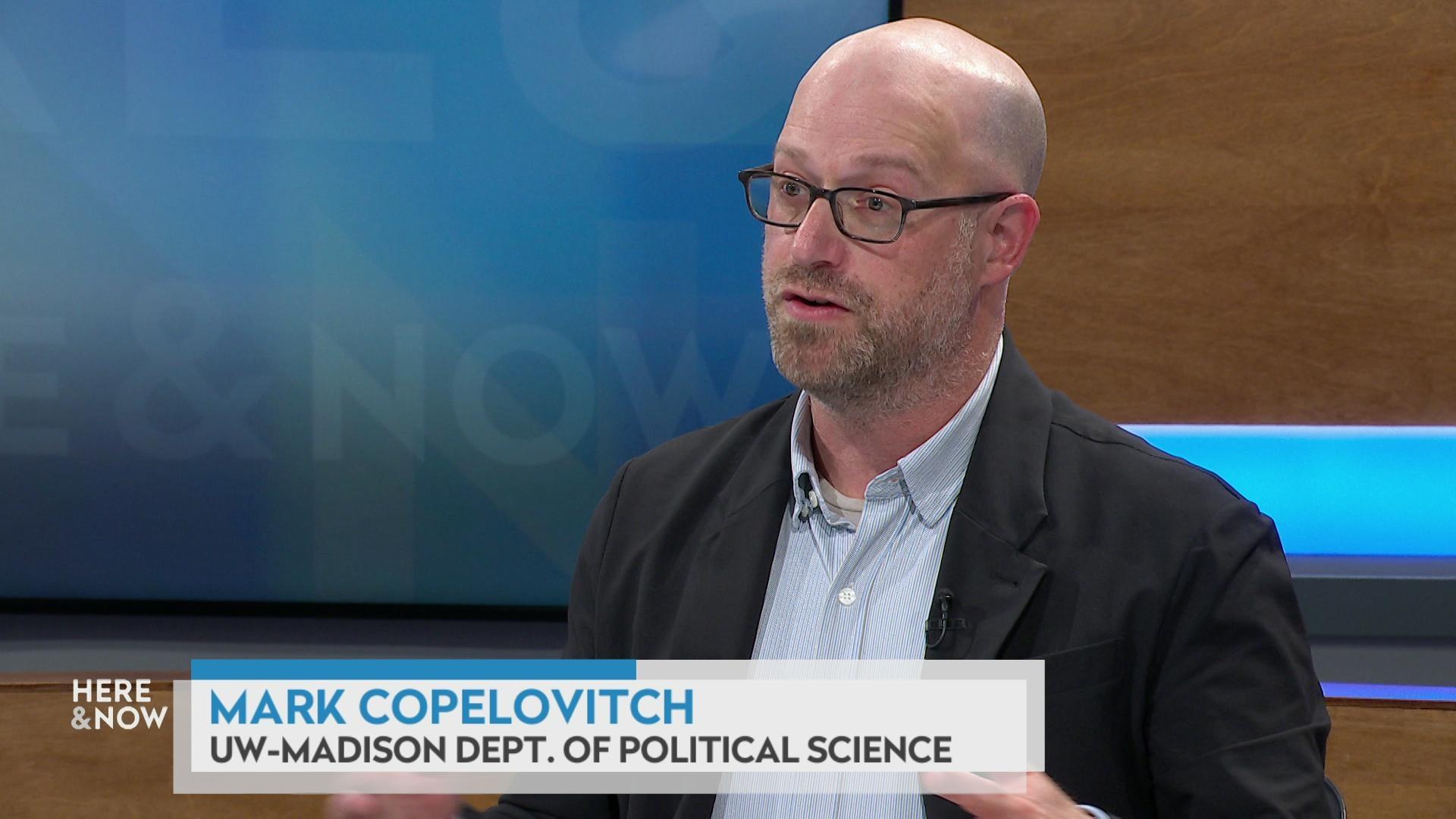TV announcer:
First the house of representatives. Members of the house are elected on the basis of
Joe Astrouski:
It may sound like simple high school civics.
TV announcer:
The entire country is divided up into congressional districts.
Joe Astrouski:
Every ten years, states redraw district for members of congress and for the state legislature. Those new district maps are meant to account for changes in population based on the US census, but with the power to redraw those maps also comes the power to shape the outcomes of elections. To show just how dramatic that impact can be, advocacy groups have developed what they call redistricting roulette. It's a diagram that shows a fictional town with two parties, represented by circles and triangles, trying to elect representatives to five seats. Divide the town this way and the triangles get four seats while the circles get one. But rotate those lines a few degrees, and the circles pick up four out of five seats. Rotate the lines once more, and the circles shut out their competition entirely. Generally speaking, and in Wisconsin, the party in power controls how the new lines are drawn. In practice, the use of redistricting for political gain usually falls into two strategies, called packing and cracking. We asked University of Wisconsin political scientist David Canon to explain.
David Canon:
So for packing what you would do, let’s say you control the redistricting process as one party. You would pack your opposing party into one district in the area, so basically give them that one district, and then pick up the three or four surrounding districts. Cracking would be if you're really getting to be aggressive and you think you can win all the seats. Then you can split up your opponents into slices where you then would dilute their power so you could gain advantage in every one of those districts that are being effected.
Joe Astrouski:
These techniques are not new. In 1812 Massachusetts governor, Elbridge Gerry, signed a bill that critics said redraw congressional districts to benefit his own party. The bill consolidated members of the opposing parties into oddly-shaped districts, including one that was said to resemble a salamander or gerrymander. Despite the potential for political motives, the Supreme Court left the methods of redrawing districts up to individual states until the mid 20th century.
David Canon:
The states could do whatever they wanted with redrawing district lines, so a lot of states just didn’t even bother to redraw their lines. They could go ten, 20, 30, 40 years and not even redraw lines at all.
Joe Astrouski:
In Wisconsin, for example, the state legislature redrew districts in 1921. The lines weren’t redrawn until 1953, when a committee of five lawmakers and three citizens redrew districts for the state legislature in hopes of making those districts more even. Other states however, continued to have unequal districts.
David Canon:
The districts became very unequal in size in terms of population. The faster-growing parts of the state would, you know, get two, three, four, ten times as many people in the state legislative district as parts of the state that weren’t gaining population or, in fact, even losing population. So these huge inequalities happened by the 1960s then where finally someone sued all the way to the US Supreme Court and the court ruled at that point that states had to create districts that were relatively equal in size, the one person, one vote idea.
Joe Astrouski:
That meant that states would have to redraw districts for congress and the legislature every ten years to keep districts equal. In Wisconsin, it also meant more tension. The assembly, senate and governor would all have to agree on new districts after every census.
David Canon:
The combination of forcing the legislature to confront this every ten years which hadn't been true before, and just the fact that we’re a very competitive state politically, that the two parties here have been very closely balanced in the last 45, 50 years, makes it so we’re much more likely to get divided government than unified government.
Joe Astrouski:
Here’s how that’s played out. After the 1960 census, the Republican legislature and two Democratic governors failed to agree on state legislative districts. Eventually, the state Supreme Court intervened and drew new maps. After the 1970 census, a Democratic governor, a Democratic assembly and Republican senate were deadlocked again over new maps. The state Supreme Court threatened again to draw new lines before lawmakers reached a compromise. In the 1980s, 1990s and early 2000s divided governments faced the same challenges, the same deadlock and the same involvement from the courts. That all changed in 2011. For the first time in generations, there was no divided government. Republicans controlled the assembly, the senate and the governor’s office.
David Canon:
And so with the Republicans firmly in control, they basically took control of the process and kind of took it out of the public eye in a way that hadn’t been true before.
Joe Astrouski:
The new maps passed the Republican-controlled legislature and were signed by Governor Sscott Walker. Citizens groups soon challenged the new maps, but the courts ultimately upheld the new congressional maps and called for minor changes in the legislative maps. Since then, some have called for a new method of drawing district lines in Wisconsin. The next round of redistricting is just seven years away.
Search Episodes
News Stories from PBS Wisconsin

Donate to sign up. Activate and sign in to Passport. It's that easy to help PBS Wisconsin serve your community through media that educates, inspires, and entertains.
Make your membership gift today
Only for new users: Activate Passport using your code or email address
Already a member?
Look up my account
Need some help? Go to FAQ or visit PBS Passport Help
Need help accessing PBS Wisconsin anywhere?

Online Access | Platform & Device Access | Cable or Satellite Access | Over-The-Air Access
Visit Access Guide
Need help accessing PBS Wisconsin anywhere?

Visit Our
Live TV Access Guide
Online AccessPlatform & Device Access
Cable or Satellite Access
Over-The-Air Access
Visit Access Guide
 Passport
Passport


















Follow Us